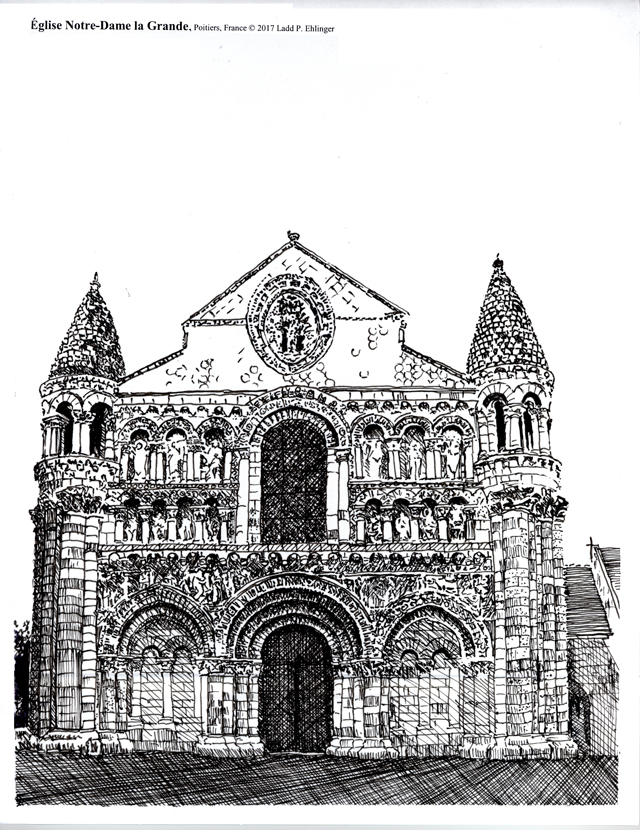
Projects Newsletters Personnel Contact

The west front of Église NotreDame la Grande has one of the finest arrays of Romanesque sculptures on display of any Romanesque church. The limited edition print of a sketch by Ladd P. Ehlinger of this church is indicative of the quintessential Romanesque church.
After the “Dark Ages” and ending of the feudal system, when civilization began to revive, the Roman period of history was emulated as it was thought to be of a more refined nature than the period then ending, so all things Roman, including the distinctive broad round arches were reinterpreted, as were the barrel vaults and domes. Sculpture and painting saw a revival as well.
The plans of Romanesque churches were a reinterpretation of the basilican plan of the Romans, which were halls of justice and commercial enterprises. The Roman basilicas were entered in the middle of the long side, but when reinterpreted as a church were entered in the short side to facilitate the Christian processional rituals.
The central hall of this church, the nave, is a barrel vault with ribs marking each bay columnar support below that also support Romanesque arches parallel to the long axis of the vault. The side aisles however are of groin vaults (intersecting barrel vaults) at a lower level. There is a magnificent conical dome at what would be the crossing of the transept, except there is no transept (wings at right angles to the nave). The east end of the church terminates in a rounded apse or chevet where the aisles from each side join.
Poitiers is a very old city and has been inhabited since Roman times. Julius Caesar conquered Gaul (modern day France) in 59 through 49 BC. Constantine built buildings in what is now Poitiers. Later, when he Muslims invaded southern France, they were defeated by Charles Martel at Poitiers in 732, which changed the future of Western Europe until our current time, when it again is under assault by Muslims with a much different “battle plan” - that of the hijrah, by immigration and political demands rather than physical battles.
The eleventh century saw an increase in religious fervor and more strife with the Muslims. This led to the founding of numerous convents and monasteries, as well as the Crusades in further response to continuous Muslim invasions at many point is Europe and Asia Minoe. The Aquitane, the region around Poitiers, was very involved in raising and financing Crusade armies.